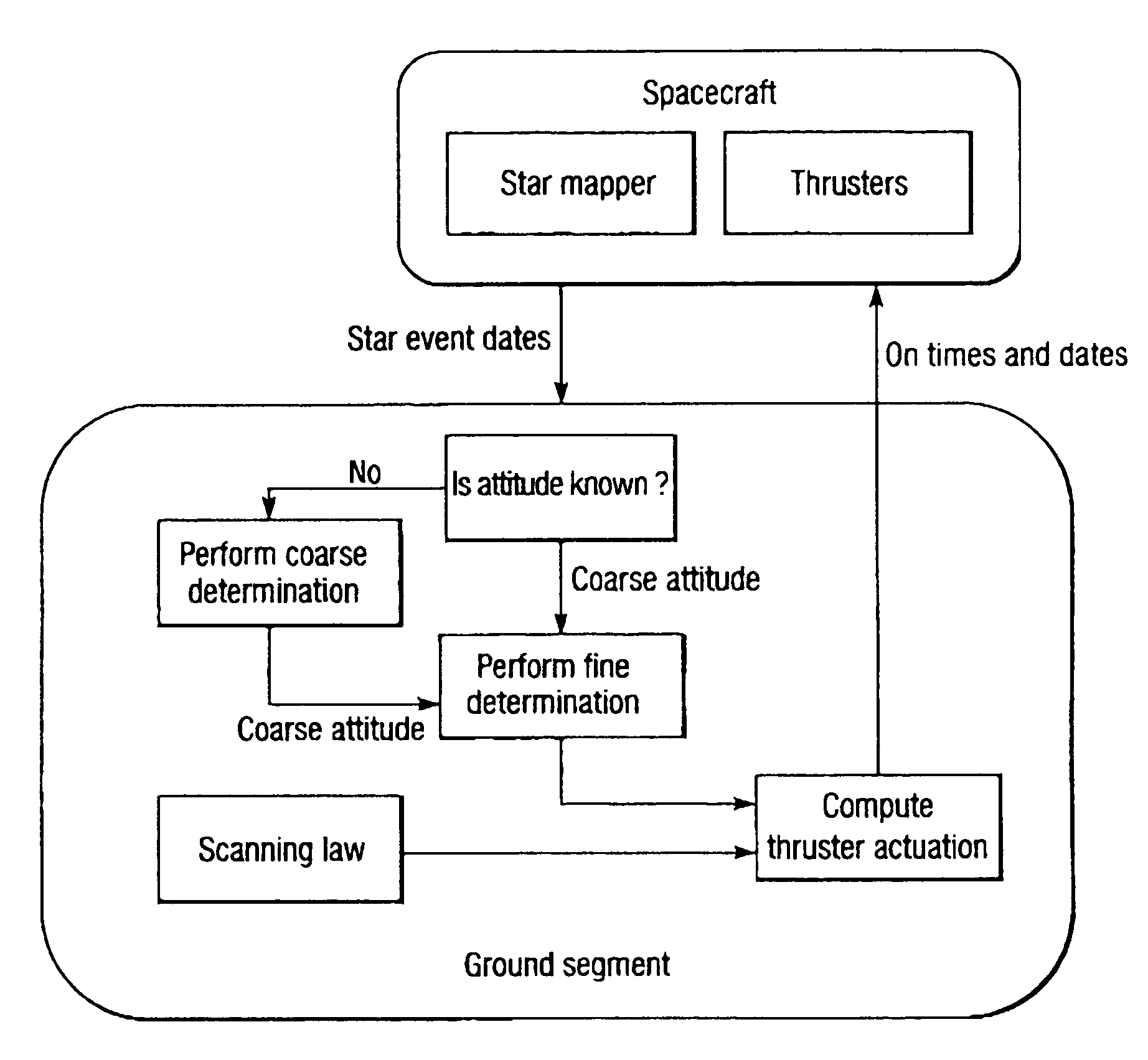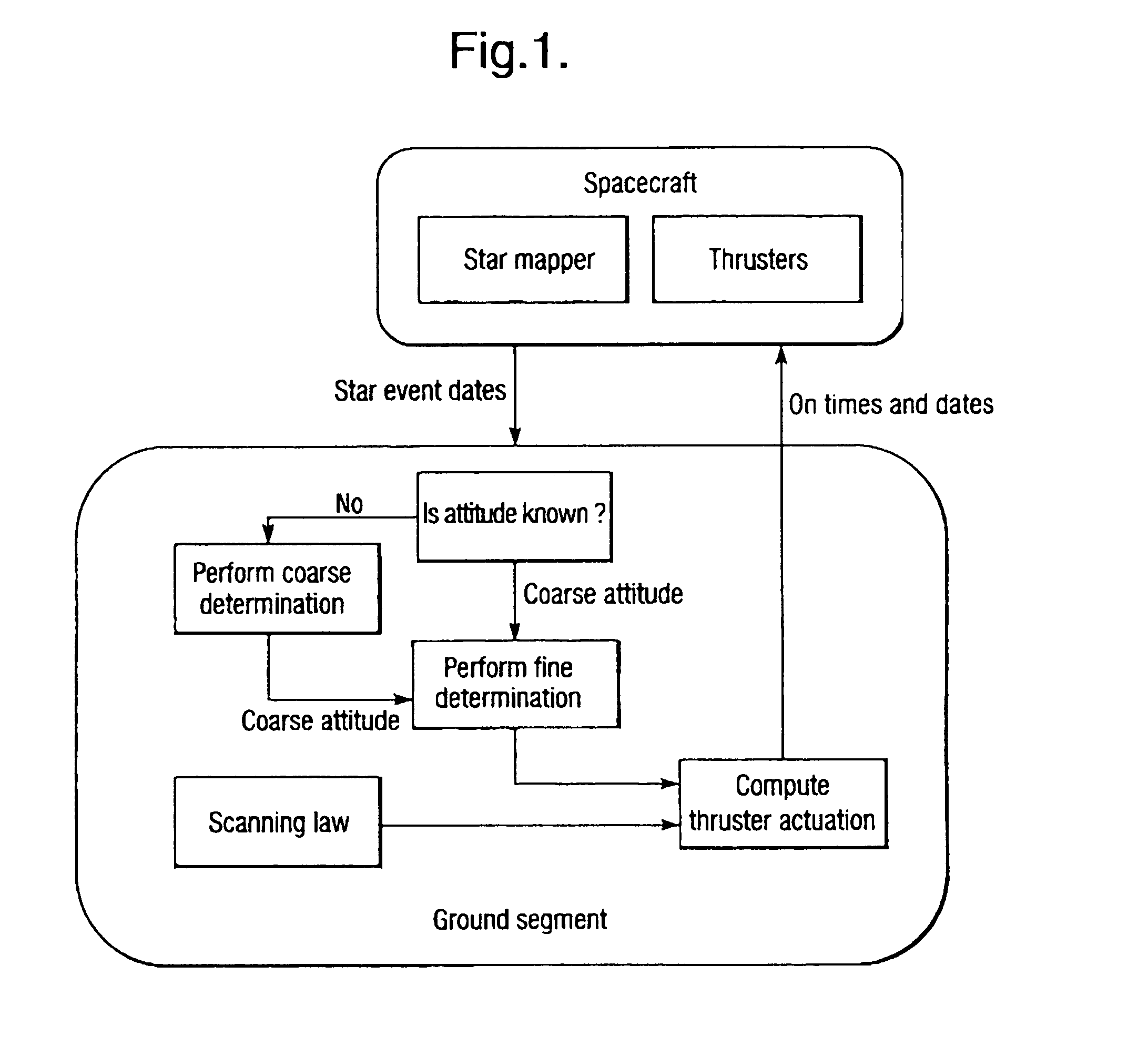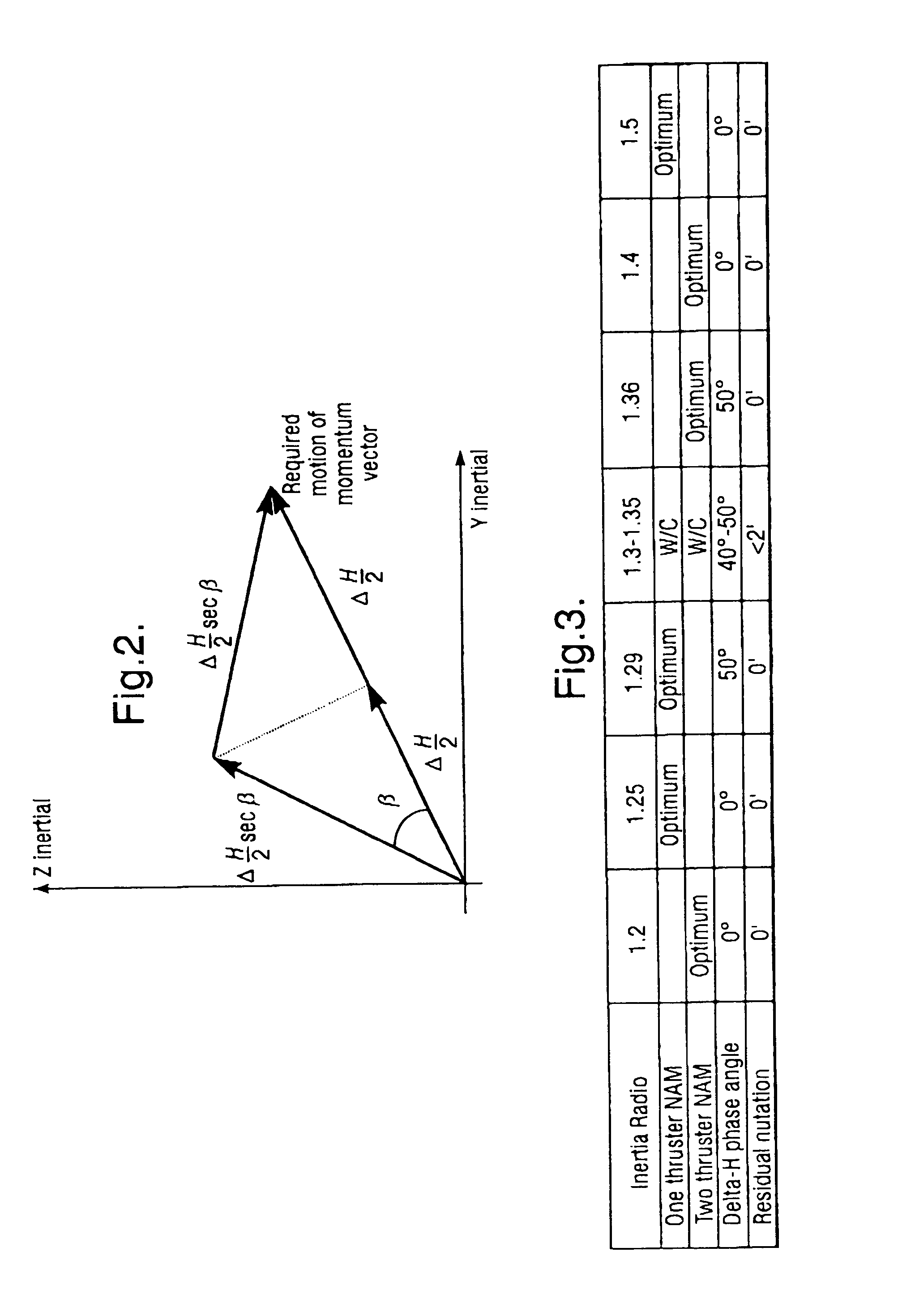Autonomous manoeuvring for spinning spacecraft
a technology of autonomous manoeuvring and spacecraft, which is applied in the direction of navigation instruments, instruments for comonautical navigation, instruments, etc., can solve the problems of reducing the complexity of the on-board aocms software, accumulating manoeuvring errors, and limiting the use of the known strategy
- Summary
- Abstract
- Description
- Claims
- Application Information
AI Technical Summary
Benefits of technology
Problems solved by technology
Method used
Image
Examples
Embodiment Construction
[0055]In this specification, the term “autonomous” is taken to mean without ground intervention other than initialisation from ground. Also, the term “attitude” is used throughout to mean / cover any orientation with respect to a predetermined reference frame. Also, the terms “magnitude” and “phase” as used in relation to thruster pulses should be taken to mean duration of the pulses and the time when the pulses are to be fired.
[0056]Referring first to FIG. 4, there is schematically shown therein a preferred spacecraft system 1 adapted and arranged to carry out the closed loop nutation avoidance manoeuvre (NAM) of the present invention. More particularly, as shown, the spacecraft system 1 comprises an on-board segment 2 which includes a plurality of thrusters 3 arranged in a predetermined spatial configuration (not shown) at the spacecraft, a star mapper component 4, means 5 for performing attitude determination on-board in closed loop, scanning law algorithm means 6, computation mean...
PUM
 Login to View More
Login to View More Abstract
Description
Claims
Application Information
 Login to View More
Login to View More - R&D
- Intellectual Property
- Life Sciences
- Materials
- Tech Scout
- Unparalleled Data Quality
- Higher Quality Content
- 60% Fewer Hallucinations
Browse by: Latest US Patents, China's latest patents, Technical Efficacy Thesaurus, Application Domain, Technology Topic, Popular Technical Reports.
© 2025 PatSnap. All rights reserved.Legal|Privacy policy|Modern Slavery Act Transparency Statement|Sitemap|About US| Contact US: help@patsnap.com



